Context
With over 20 worldwide sites, the layout of each one of those Amadeus’ offices can be quite difficult to navigate for newcommers, clients, or even sometimes for regular employees who often have a hard time figuring out their way around the various buildings.
As part of an innovation forum, this problem was discussed with a much bigger idea in mind, the solution to this “indoor navigation issue” should ultimately be applicable to another well-known problem in the travel industry, the navigation inside an airport which can be very rushed and chaotic in an often times unknown territory for many of the travellers.
Goal
Provide a solution that facilitates the navigation two of the main Amadeus’ sites (Nice & London), keeping in mind that this product’s solution should be scalable enough to be eventually reused for the indoor navigation at the airports.
Team
Given that this started as a prototype from an innovation subject the team in charge was quite small. Later, once the product was officially released the evolution and maintenances was hand overed to a much bigger team.
My Role
As an innovation project, a lot of room was left for exploring the technologies to be used, leading to a solution that was constantly changing and which meant that I had to work very closely with the developers to make sure all the evolving technical constraints were taken into account during the prototyping phase.
Also, given that I was the only designer, I was doing both the facilitating and observing/analysing (based on the recordings) the user tests.
Research
User Testing
A batch of user tests were done with a group of employees from the Amadeus’ London site. The tests included a set of intro questions followed by 3 scenarios that were performed on the first prototype of the application. We managed, thanks to those sessions, to validate some of our hypothesis and discover new functionalities that were later added to the product like “share my desk” or “find a free meeting room”.

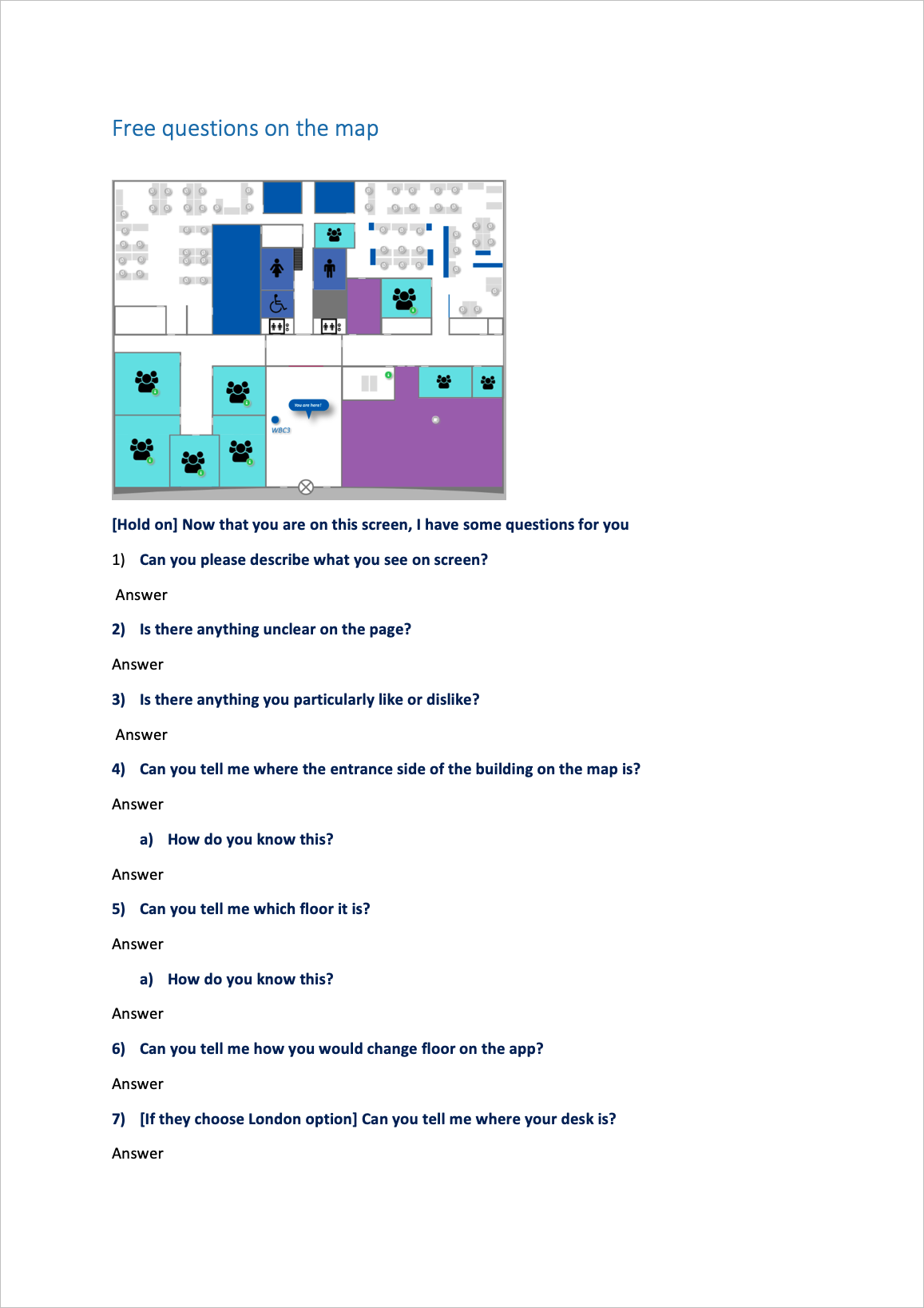
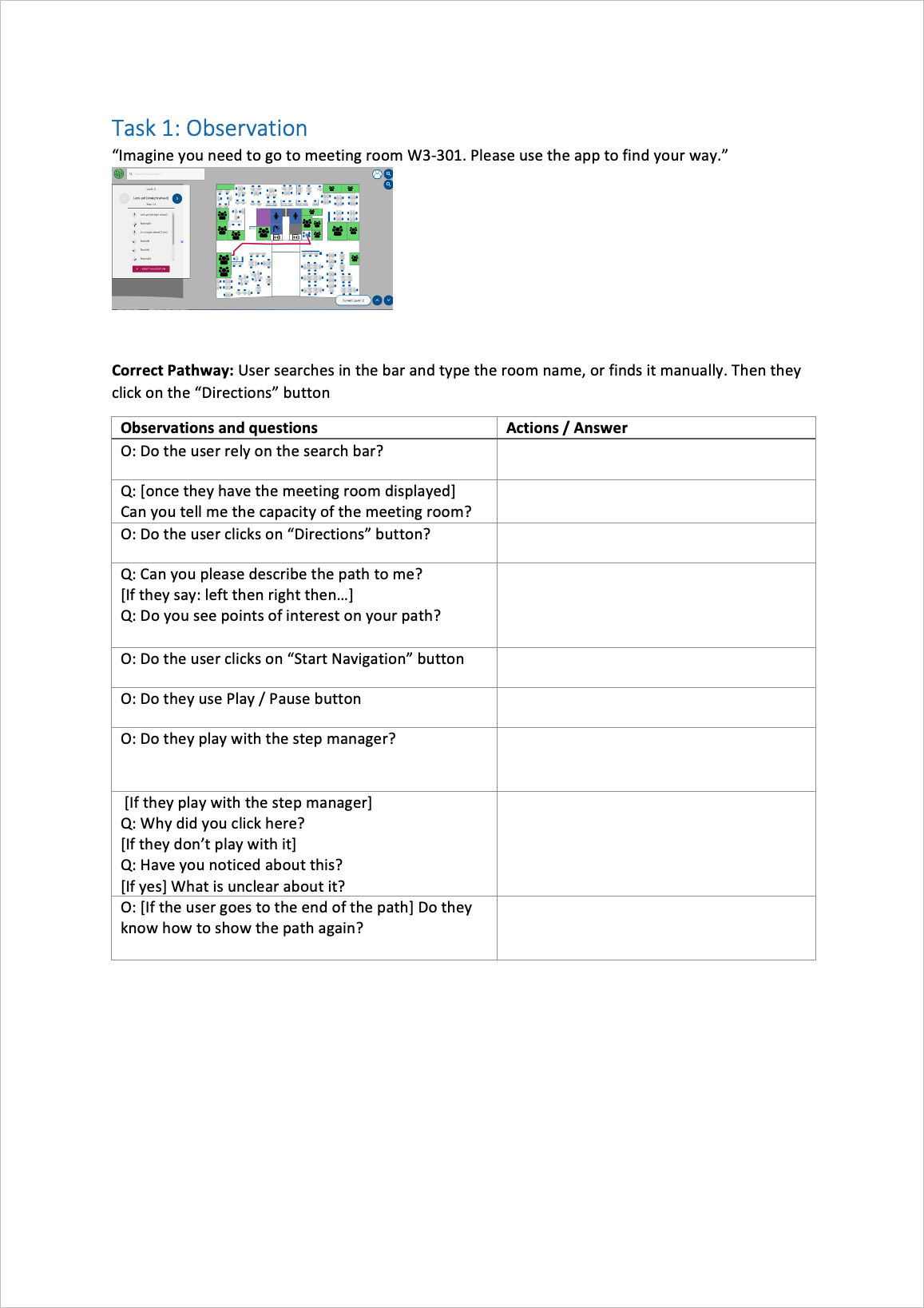

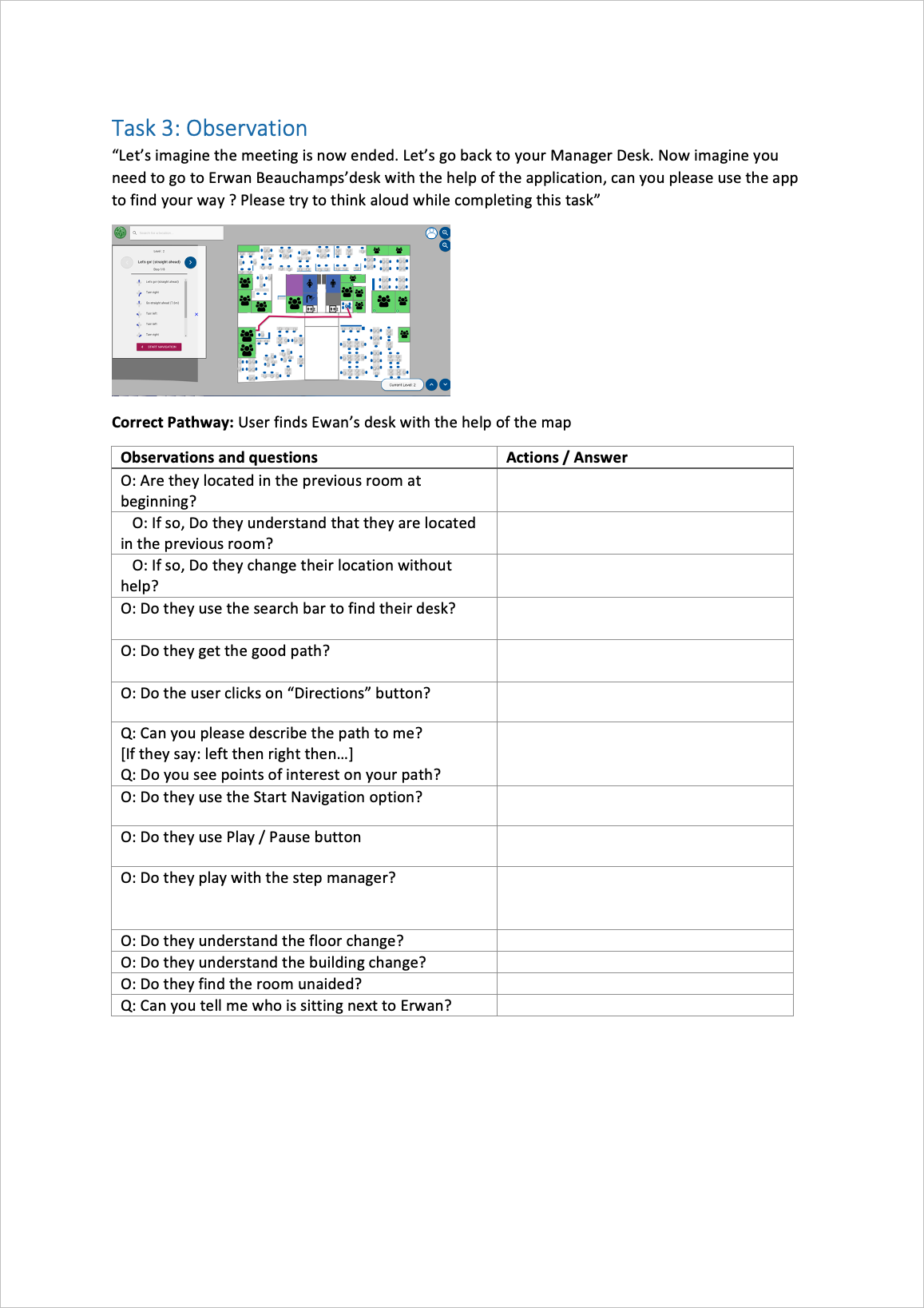
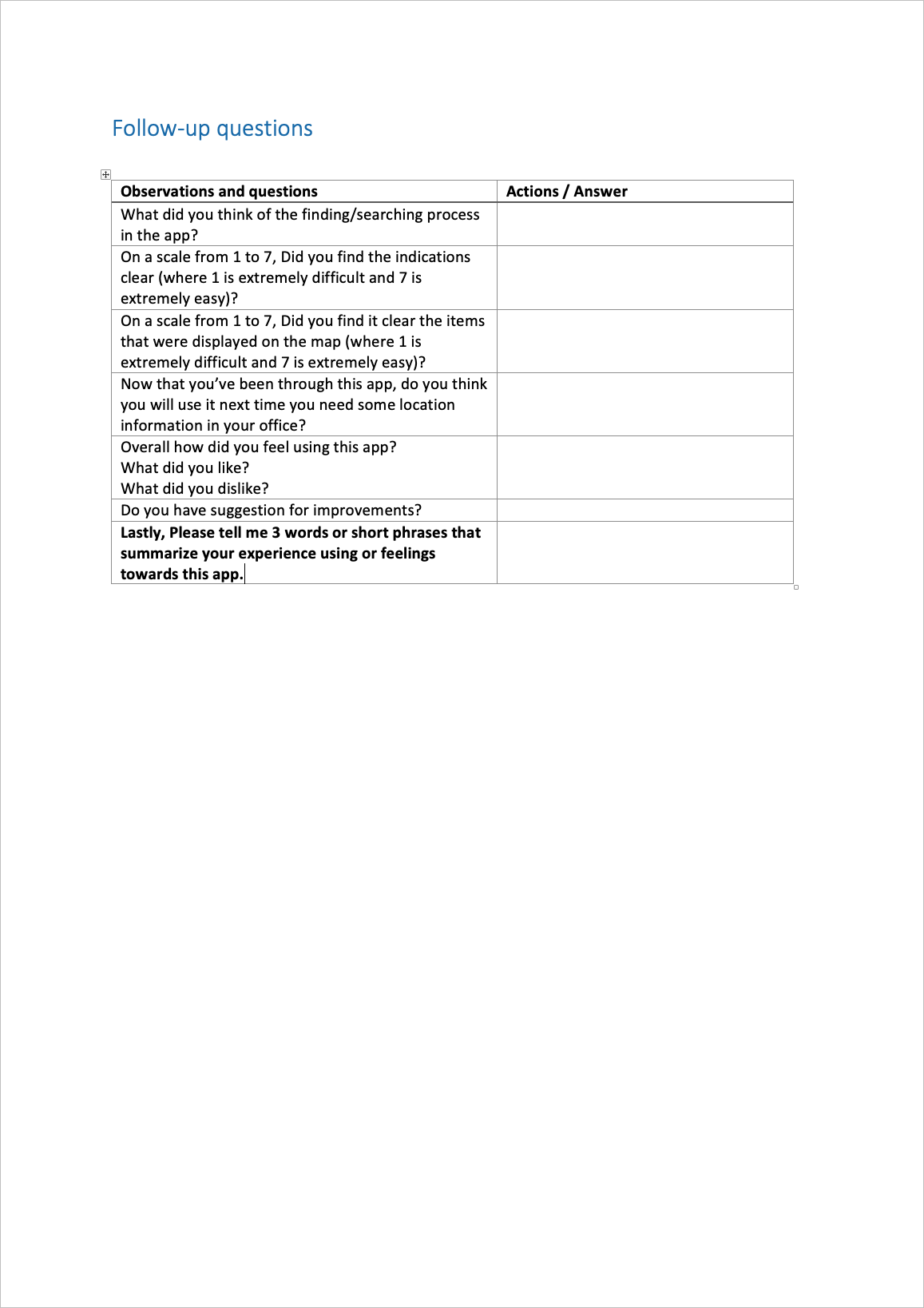
End Result
Even though this project was thought more as an “incubator” for a future much larger product, it ended up being quite useful and massively adopted by our colleagues who started using it to find their way in their corresponding sites.
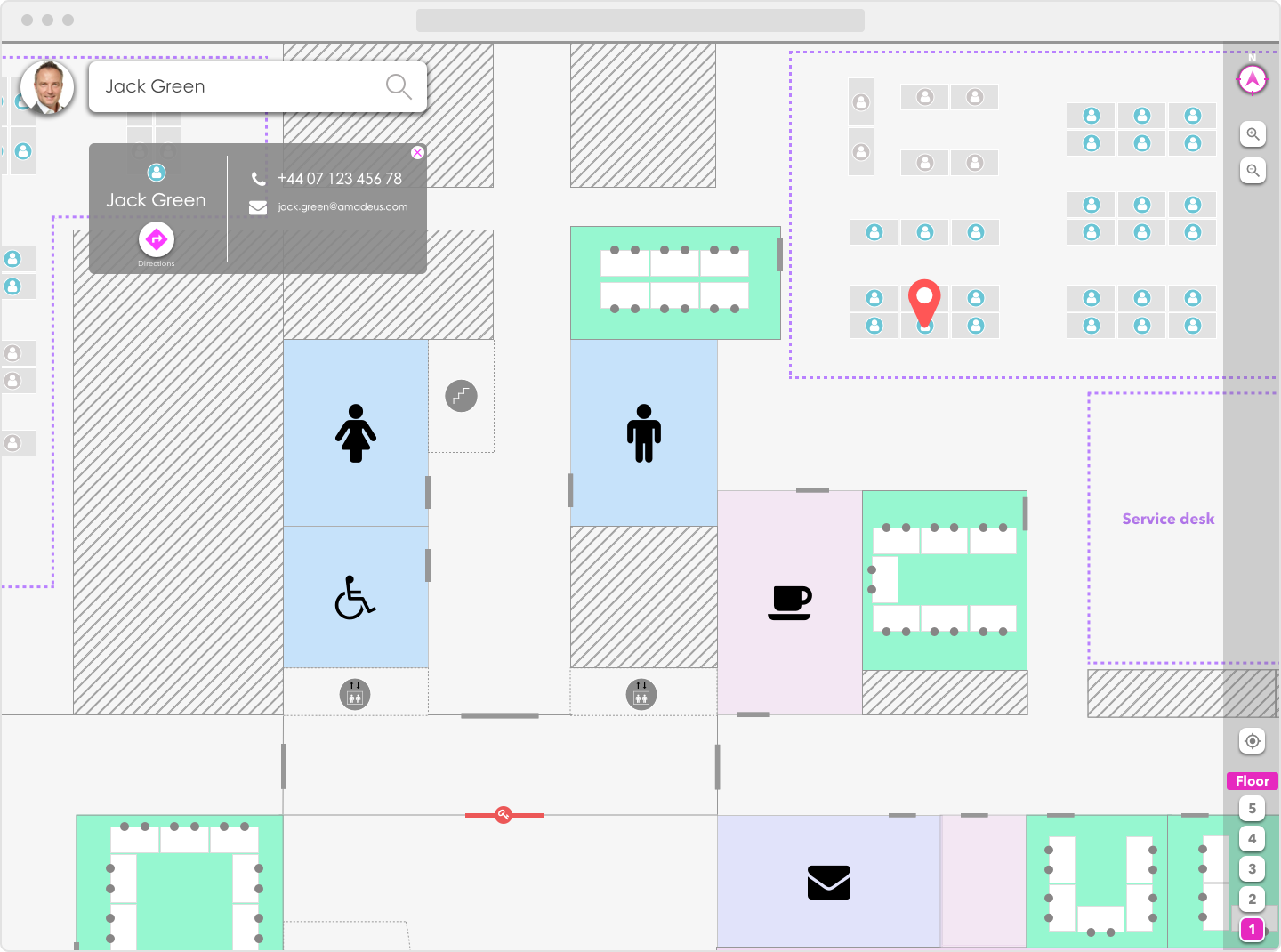
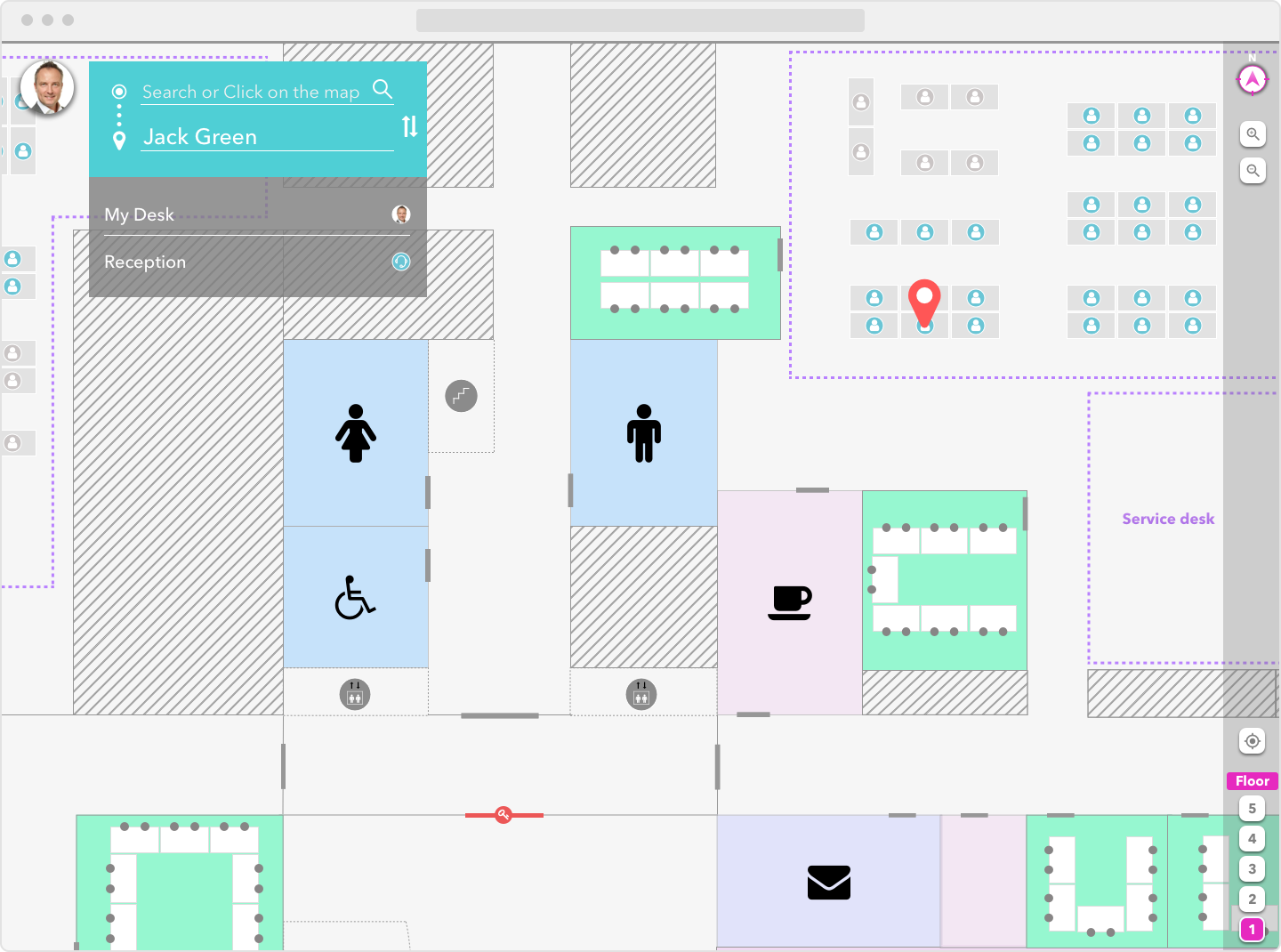


Challenges
Precise indoor location
Not being able to have a very precise indoor location was more of a technical constraint than functional one but it had big impact in our designs. It was thought that thanks to ‘Beacons’ the application would be able to locate our users with a certain degree of precision. But unfortunately Beacons, which work quite well in large indoor spaces (like malls), didn’t quite work in our scenario where users were meant to be navigating between desks and 1 or 2 meters offset would make a huge difference in the navigation path. The step-by-step navigation flow was then kept as a helper rather than a live guided set of instructions.